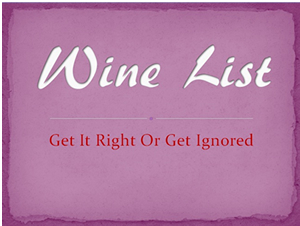 In spite of India’s late entry into the world of wine as a serious consumer, the country has come a long way in its quest of becoming a highly sought after market for the beautiful beverage. In the absence of a robust retail and online sector, wine business in India is almost entirely driven by the hospitality industry. And given the high margins derived from their sales in luxury hotels and an ever-increasing demand and awareness, wine has well and truly replaced other (stronger) alcoholic beverages as the leading contributor to F&B revenues in top hotels and their restaurants, as well as standalone properties. In spite of India’s late entry into the world of wine as a serious consumer, the country has come a long way in its quest of becoming a highly sought after market for the beautiful beverage. In the absence of a robust retail and online sector, wine business in India is almost entirely driven by the hospitality industry. And given the high margins derived from their sales in luxury hotels and an ever-increasing demand and awareness, wine has well and truly replaced other (stronger) alcoholic beverages as the leading contributor to F&B revenues in top hotels and their restaurants, as well as standalone properties.
Hotel chains which represent some of the most iconic and signature food brands but were not necessarily typical ‘wine & food destinations’ until sometime ago, are also on a course-correction phase and now investing prudently on improving their wine offerings.
The realization within the country’s F&B community about the importance of wine and its contribution to the bottom line and stature has resulted in added focus on every aspect related to wines, especially wine lists and their content and design. No wonder these have evolved from simple bill of fares to classic menus packed with many unique features and valuable information. All these are a part of a clear business strategy to capitalize on wine’s acceptance and superior placement vis-a-vis other beverages.
Undoubtedly, wine lists are the face of any wine program and often reflect the organisation’s commitment to the ‘wine cause’, a reason why a lot of attention should be dedicated in their creation.
So what makes a great wine list and how can it be optimized to achieve larger business goals? Whilst there may be multiple perceptions about what constitutes a high quality wine list, five main factors need to be addressed while designing one:
Balance: Achieving harmony across all parameters is the single-most critical requirement in creating world-class wine lists. A right balance of regions / appellations, grapes / blends, styles & types, price points and number of labels (as per your inventory and storage specifications) will go a long way in boosting your image as a wine-friendly gastronomic destination in addition to adding handsomely to your revenues.
Therefore, a selection of ‘terroir-driven’, earthy Pinot Noirs from Burgundy are highly desirable but so are the fruit-forward and upfront Pinots from Central Otago. A heavily oaked and lees-matured Chardonnay with its buttery texture will perfectly accompany some of your richer main course items but the lighter and fruitier Albarino might just be the wine for those who do not appreciate oak in their whites. Similarly, Champagnes are must-haves in every list but why not expand your selection by including other interesting Traditional Method sparkling wines? The possibilities of achieving the right balance in a wine list are many...you just have to put your wine expertise to the best use.
In some F&B destinations of our country, this balance is overlooked to project an enviable ‘luxury quotient’, by loading high-end, super-premium and cult wines in their lists. This unsustainable approach not only restricts the spread of wine’s popularity but also likely to result in a failure of the organisation’s wine program in the long run.
Information: No menu (food or beverage, doesn’t matter) is worth its salt without the bare minimum information it provides to the customers. For wine, even a bare minimum is not enough as every wine is unique in its profile and carries its idiosyncrasy in the bottle, which needs to be decoded for everyone’s convenience. Great wine lists will also distinguish themselves by offering relevant recommendations with the cuisine served.
Also, it is critical to ensure that all your information is accurate, factually correct and relevant to the wines. Pay particular attention to the spellings...one of the most common issues in many wine lists that I have encountered in India.
Compatibility to the cuisine: Keeping the balance factor in mind, wine lists must ensure that the majority styles and types of wines in the lists are friendly to the cuisine served. If this factor is not given its due importance, expect a large number of your wines to languish in the stores for a long time, locking in vital cash. For example, it is not advisable to include a lot of heavy textured, oak-influenced and rich wines in a wine list of Oriental cuisine restaurant, serving predominantly light and delicate dishes.
Overall business objective: What is your pricing policy? Are you overstretching your inventory limits and value to accommodate large number of labels? Do you have optimum storage conditions and cellaring capacity? What is your capacity of holding slow moving items? Is there a robust wine training regime in place which will ensure that the wine offerings are effectively implemented by the frontline staff? What is the realistic percentage of wine sales do you want to achieve against the overall F&B revenue? Does your wine list reflect the spending capacity of your customers? Does it meet their expectations? These are some of the questions one needs to bear in mind while designing the wine list. So, ensure that you have a checklist of your business goals (related to wine sales) handy while creating the list.
Uniqueness: Last but not the least, set yourself apart by designing a wine list which offers something different to your customers, something that they will remember and talk about. It could be exclusive labels, a never-seen-before design, layout and presentation, a Wow-inducing wine-by-the-glass program, interesting but valid wine pairing recommendations or even simple features like seasonal promotions etc.
Whilst everyone wants to have their share of the wine pie, only those who are willing to invest wisely in their wine program are likely to walk away with the largest slices. A thoughtful investment in  your wine list could be one of the two main strategic decisions which is likely to keep you ahead in the race (the other being quality wine training and creation of a dedicated Sommelier cadre). your wine list could be one of the two main strategic decisions which is likely to keep you ahead in the race (the other being quality wine training and creation of a dedicated Sommelier cadre).
Niladri Dhar
|